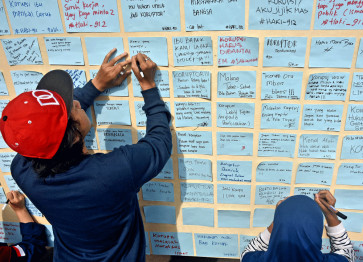Popular Reads
Top Results
Can't find what you're looking for?
View all search resultsPopular Reads
Top Results
Can't find what you're looking for?
View all search resultsQuality behind quantity in anticorruption evaluation
Change text size
Gift Premium Articles
to Anyone
In the 2018 Corruption Perception Index (CPI), Indonesia scored 38, a one-point increase from the previous year’s score of 37.
Some may see this as a success in Indonesia’s struggle against corruption, albeit marginal. Anticorruption advocates therefore still consider Indonesia as one of the most corrupt countries in the world. A recent report by the independent Indonesia Corruption Watch (ICW) revealed that total losses from corruption in Indonesia in 2018 were worth about Rp 5.6 trillion (US$400 million).
Among the sectors highlighted in the report, village funds were among the state sources in the middle of the highest number of corruption cases ( 96 ). Total loss from this sector last year was approximately Rp 37.2 billion.
Last January, just one month into 2019, a number of public officials were arrested by the Corruption Eradication Commission (KPK).
Also, two KPK investigators were recently attacked while conducting surveillance in a Jakarta hotel. These certainly are not signs of success in our fight against corruption.
Anticorruption evaluation has always been challenging, particularly given difficulties in knowing whether interventions have actually made an impact because of the intricate nature of the problem. Many experts believe that multiple dimensions of corruption should be carefully assessed to determine the success or failure of existing anticorruption initiatives.
Historically, before Transparency International’s CPI became a household name in anticorruption evaluation, qualitative methods were commonly used in assessing anticorruption practices. Despite the widespread use of such methods in the pre-CPI era, much criticism was raised about the lack of presentation of corruption facts in them.


















